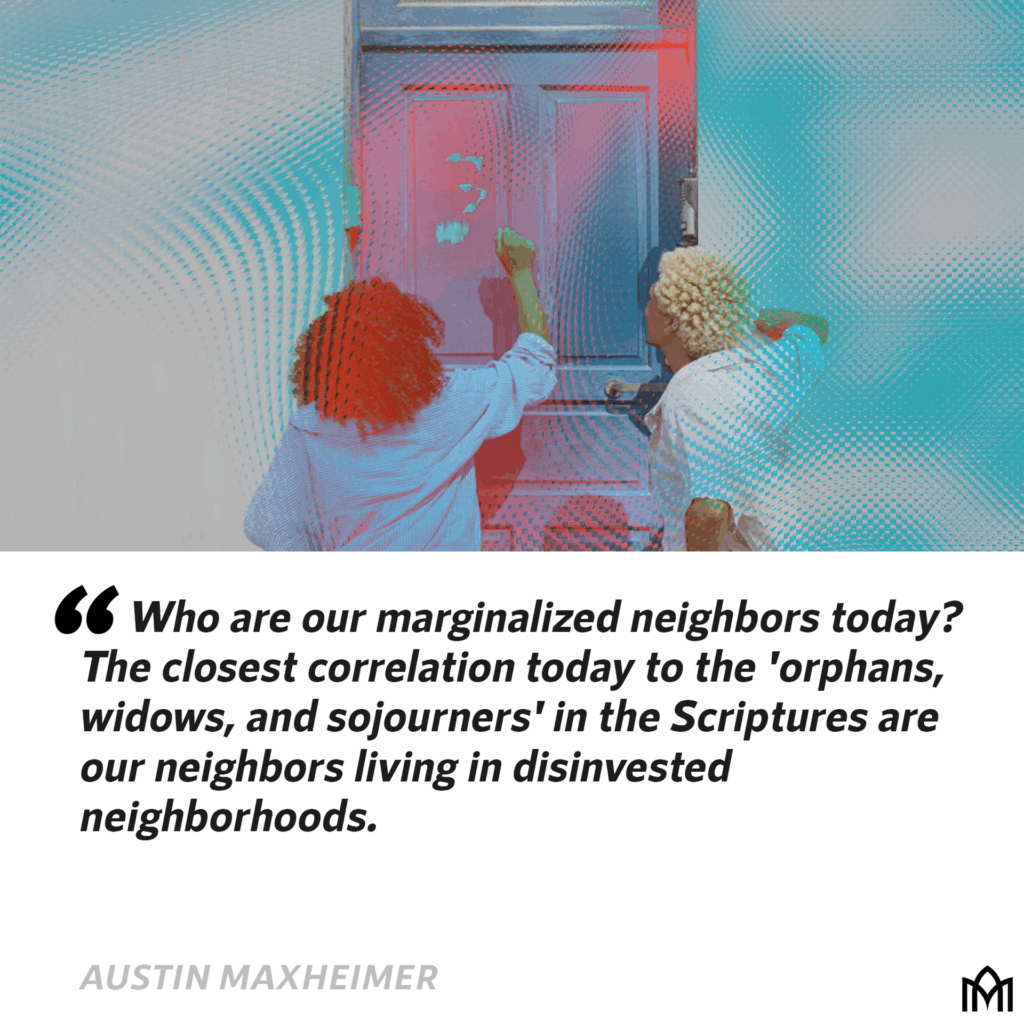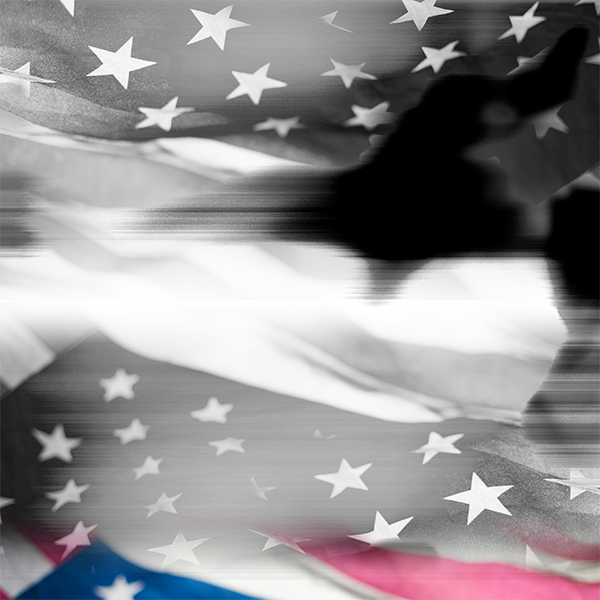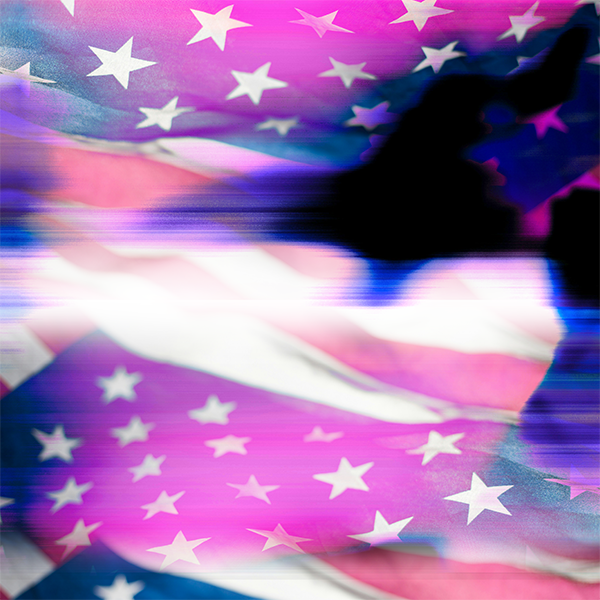Who Are Our Marginalized Neighbors Today?
“And who is my neighbor?” This has been the qualifying question for religiously minded people for 2,000 years now. The answer Jesus gives is as profound and challenging as it was then.
Let me tell you a story.
I met Lisa and Cathy when we kicked off our neighborhood initiative in 2017. They were drawn to the effort like many of their neighbors, the hope that things could be better and they could be a part of the change. By certain measures Lisa and Cathy would be neighbors of need—living below the poverty line, mental and physical health challenges, low educational attainment, etc. And yet I watched them give of themselves year after year to love their neighbors, especially the youth in the neighborhood so that generational cycles of injustice might be broken. Neither of them claimed following Jesus as their faith. The dissonance for me was that while I heard people talk about loving their neighbors in the name of Jesus quite frequently, I rarely saw Christians physically come to our neighborhood outside of a once-off serve day. If you were to ask me who was showing the youth of our neighborhood Jesus, I would have to say Lisa and Cathy.
Who Is My Marginalized Neighbor?
Jesus’ sharing of the Good Samaritan parable in Luke 10:25-37 is actually a continuation of the question of what is the greatest command, or way of life, to which Jesus responds with the correct Jewish answer, the Shema, as found in Deuteronomy 6:4-5: “Love the LORD your God with all your heart, mind, soul and strength.” You know who could not love God with his whole being? The guy beat up on the side of the road in the parable! Physically, ruined. Emotionally, wrecked. Mentally, terrified. Spiritually, unclean. This poor guy needed restoration.
In the Old Testament we meet another group of neighbors who are pushed to the edges of their society: Orphans, Widows, Sojourners (OWS). Forty-two times they are grouped together in a formulaic way. Why? I believe it is because in a time and place where land and fathers occupied the center of culture, they were landless and fatherless. By virtue of their position—not value or identity—they were marginalized. Yet God did not see OWS, but sons and daughters, brothers and sisters, so God called the people of Israel over and over again to bring holistic restoration to their neighbors, in order that they may be activated into the missional purpose of the people of God.
By the time of Jesus, the center of society had shifted slightly. In his time and place, the Jewish religious system occupied the center, while being inside the occupying Greco-Roman culture. Within the religious system of Jesus’ day, who is pushed to the edges and at-risk from loving God with their whole being? Other religions like those of our friend the Samaritan and other Gentiles (outsiders), people who aligned politically with Rome like tax-collectors, women and other second-class citizens, those with mental and physical disabilities deemed unclean, among many others. Jesus, as the fulfillment of God’s missional purposes, brought restoration and activation to these neighbors in so many beautiful Gospel stories.
And so I wonder:
- Who are our marginalized neighbors today?
- Who are the unprotected, uprooted, under-resourced, underrepresented, overlooked?
- Who are those that we the Church are to love, following in the way of Jesus?
God called the people of Israel over and over again to bring holistic restoration to their neighbors, in order that they may be activated into the missional purpose of the people of God. Share on X
Neighbors In Urban Core Neighborhoods
This is a complex reality that would take a dissertation to properly address, so apologies for the oversimplified presentation here. But it is my argument that the closest correlation today to the OWS of Jesus’ day are our neighbors living in disinvested neighborhoods. The most basic reason for this is because this is where marginalized neighbors can afford to live! I want to acknowledge that not all marginalized neighbors live in disinvested neighborhoods and not all neighbors living in disinvested neighborhoods are marginalized. However, the housing stock in neighborhoods like the one I live are typically much lower than the surrounding community, and so my neighbors frequently experience generational poverty, are fixed-income households due to aging, disabilities or unemployment, and are filled with immigrant and migrant populations. Often, my neighbors are minorities who have faced unjust historical practices like redlining and many other systemic injustices, and are as a result are overrepresented in urban core neighborhoods that faced decades of disinvestment when our cities sprawled to the suburbs.
What is more, neighbors living in these neighborhoods—as a data set—often have unfavorable outcomes such as lower educational attainment, income disparity, mental and physical health, even life expectancy! This is how generational cycles get locked in and trap neighbors. Seth Kaplan, in his book Fragile Neighborhoods, captures it when he says that, “ZIP code may not be destiny, but it operates with something like gravity.”1Seth D. Kaplan, Fragile Neighborhoods: Repairing American Society, One Zip Code at a Time (New York: Little, Brown, Spark, 2023), 40-42. Two quick examples from my city, Evansville, Indiana, make this point: 80% of our neighbors experiencing poverty live in 13 urban core neighborhoods, and the difference in life expectancy from our highest to lowest neighborhoods is 23.5 years.2See “The State of E Report” or Evansville, Indiana, accessed May 4, 2025, https://www.forevansville.org/stateofe.
Surely Not Those Neighbors?!
If you have tracked with me so far, I’m hopeful that I have convinced you of two things:
- The People of God are called to restore and activate marginalized neighbors, and
- Our neighbors facing marginalization are concentrated in relatively few neighborhoods in our communities.
In my dissertation research, which tackled the ministry problem of what catalyzed and sustained churches in neighborhood revitalization as a vehicle for ministry to marginalized neighbors, I asked congregants and pastors what their understanding of the role of the church was, and what their faith in action looked like in the past year. Of the thirteen questions I asked, the three lowest responses, by far, were the following statements:
- “The Church has a specific calling from God to restore marginalized neighbors of a community.”
- “Have served or been present with a marginalized population in my community.”
- “Have spent time in a disinvested neighborhood in my community with the purpose of living out my faith.”
Ooof!
We have come a long way from the community of faith that revolutionized the ancient world by caring for orphans and widows, remaining in cities to care for the sick and dying during plagues, and starting innovations like hospitals and universities. At one point, our biggest critics complained about our compassion. This is certainly no longer true.
I believe that the Jesus revolution we all long to see will have its best chance at rooting in our day through the restoration and activation of those society has deemed the “least of these.” The gospel transformation of marginalized communities, through the participation of God’s missional people living out Jesus’ ministry of reconciliation, is sorely needed. What is more, I think this Jesus Revolution is attainable in our lifetime through church-led neighborhood revitalization.
///
I believe that the Jesus revolution we all long to see will have its best chance at rooting in our day through the restoration and activation of those society has deemed the 'least of these.' Share on X




